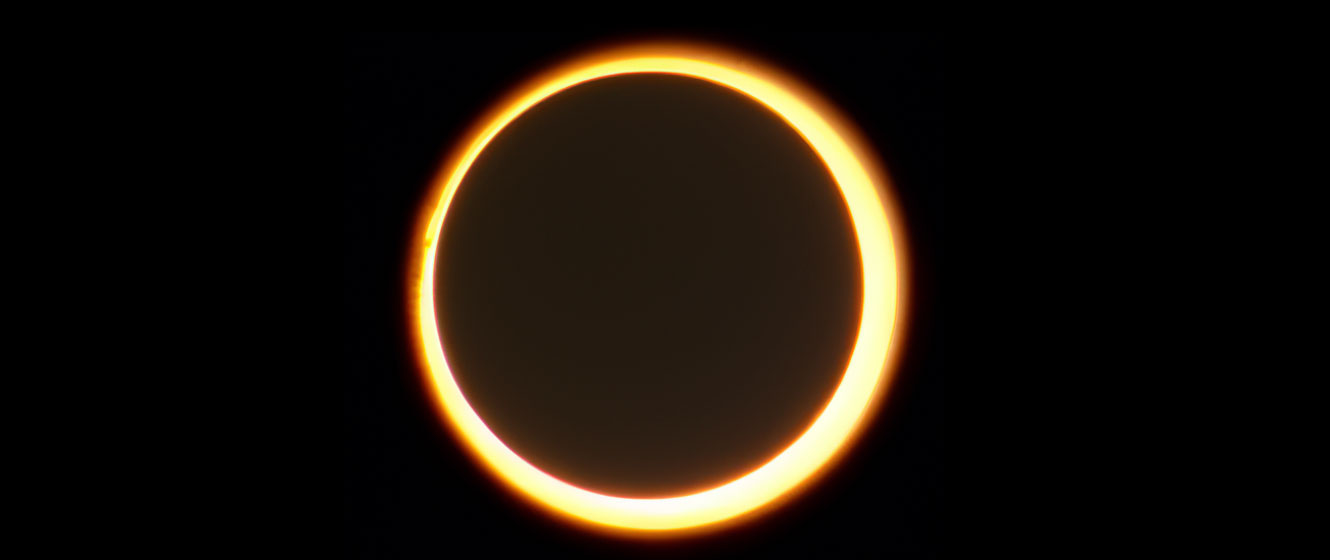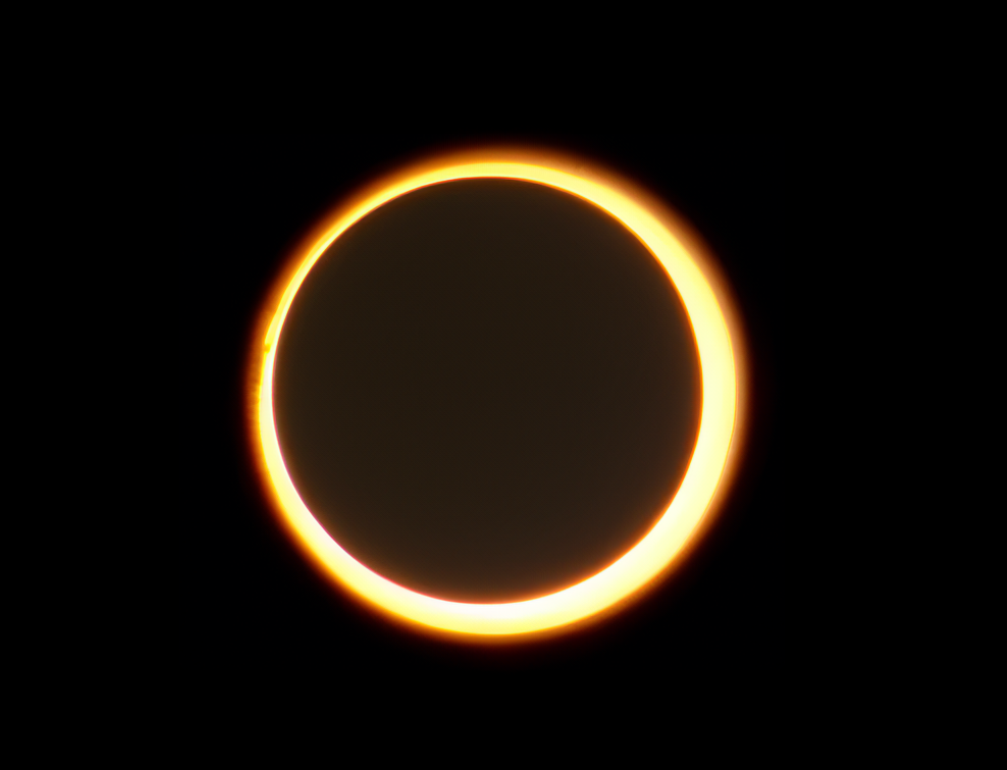
Solar eclipses are mesmerizing celestial events that capture the imagination of people around the world. Among the various types of solar eclipses, one particularly intriguing phenomenon is the annular solar eclipse. But what exactly is an annular solar eclipse?
An annular solar eclipse happens when the Moon passes between the Earth and the Sun, partially covering the Sun’s disk and causing a thin ring of sunlight to remain visible around the Moon’s silhouette. This creates a breathtaking spectacle where the Sun appears as a radiant ring of light, often referred to as the "ring of fire.”
But why is this? The occurrence of an annular solar eclipse stems from the relative distances and sizes of the Sun, Moon, and Earth. While the Sun is approximately 400 times wider than the Moon, it is also about 400 times farther away from Earth. One would think then that the Moon would cause a total solar eclipse every time it passes directly in front of the Sun then, right? Not so! Because the Moon orbits in an ellipse, there are points along its orbit when it’s further away (known as apogee) from the Earth and other points where it’s closer (perigee).
In the case of an annular solar eclipse, the Moon's position in its elliptical orbit plays a crucial role. When the Moon aligns with the Sun, but it is at or near its apogee from Earth, it appears slightly smaller in size compared to the Sun. As a result, when the Moon moves across the face of the Sun during the eclipse, it doesn't completely block the solar disk.
It's worth noting that the duration and visibility of the annular phase of an annular solar eclipse can vary. Factors such as the Moon's exact distance from Earth and the precise alignment of the Sun, Moon, and Earth determine the specific characteristics of each annular eclipse. Some annular eclipses may feature longer periods of annularity, while others may exhibit a more fleeting glimpse of the ring of fire. There are also very rare types of solar eclipses, known as a “hybrid” solar eclipse, where some points of the path are total eclipses, while other points feature an annular eclipse. A recent example is the April 2023 hybrid eclipse visible over Australia.
AT NO POINT DURING AN ANNULAR ECLIPSE CAN YOU LOOK AT THE SUN WITHOUT ECLIPSE GLASSES! ONLY DURING THE TOTAL PHASE OF A TOTAL SOLAR ECLIPSE IS IT SAFE TO LOOK AT THE SUN WITHOUT ECLIPSE GLASSES!

Learn More
Interested in learning more solar and lunar eclipses? Not sure where to begin? Check out our Astronomy Hub!
This Article was Last Updated on 10/16/2023












